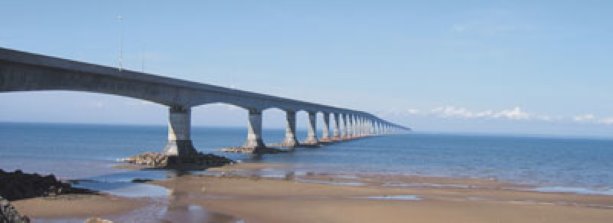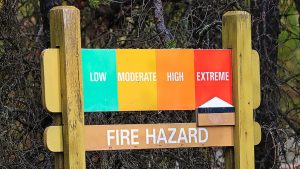More than 4,000 kilometres of sea ice grind against its feet each winter, but so far Confederation Bridge is standing as sturdy and reliable as the day it carried its first car over to Prince Edward Island 10 years ago May.
Engineering
Grind of sea ice, daily tidal surges no match for bridge
More than 4,000 kilometres of sea ice grind against its feet each winter, but so far Confederation Bridge is standing as sturdy and reliable as the day it carried its first car over to Prince Edward Island 10 years ago May.
Structural engineers from around the world gathered on the island province in August and between games of golf they poked, pinched, tickled and kicked the tires of the famous bridge as they explored its innards.
What they discovered, says Dr. Wilbert Langley, is that the $1-billion bridge is doing even better than expected.
“It is well below all the targets we set for the structure when it opened,” said Langley, owner of W.S. Langley Concrete and Materials Technology of Lower Sackville, Nova Scotia.
Below is a good thing says the world-renowned expert on concrete and the man who concocted the cement mixture that went into building the 12.9-kilometre-long bridge.
All concrete structures deteriorate over time and the Confederation Bridge was designed to function for 100 years. But after 10 years on the job, it looks younger than its age, says Langley.
It is the world’s longest bridge over sometimes frozen salt water and it confronts four tidal surges every 24 hours.
Langley used concrete composed of 29 per cent flyash to build the concrete box girders that form the two-lane traffic deck. These concrete corridors, through which the visiting engineers walked during their PEI conference, were built on both the New Brunswick and PEI shores and then transported out onto Northumberland Straight and hoisted onto poured-in-place concrete piers.
The piers that support the deck stand on the bottom of the straight 115 feet below the surface of the water and are constructed with 15 per cent flyash. They aren’t anchored in the sea bed. They just stand on the bottom, held there by the weight of the bridge.
The bridge is well below the deterioration targets set by structural engineers when it opened.
Dr. Wilbert Langley
W.S. Langley Concrete and Materials Technology
Flyash is collected from the smoke-cleaning exhaust systems in coal-fired power plants and Langley points out it adds several benefits to concrete.
It improves the concrete’s permeability to keep water out. It reduces the corrosion of reinforcing steel rods in the concrete, making cement more malleable, thus reducing the need to add water to the mix and it increases resistance to sulphates.
Flyash is cheaper than cement and if it doesn’t go into the concrete mix, it gets trucked off to a landfill site.
Langley said flyash was first mixed in with Portland cement in the 1940s and it has been used in the Maritimes since the mid-80s.
The freeze/thaw cycle is tough on concrete and so is the wet/dry cycle caused by the eight-foot tides in the Northumberland Straight.
The best way to measure the impact of those environmental conditions on the concrete in the Confederation Bridge is to break apart the concrete and study the effects.
But Langley and his fellow engineers didn’t want to do that to their beautiful bridge, so they placed concrete blocks with the same composition as the concrete bridge on the water’s edge below the bridge. The blocks suffer the same indignities Mother Nature hurls at the bridge footings. Engineers regularly cut up the blocks and analyze the effect of weathering on the concrete.
Langley is one of many engineers watching the bridge age. Donald McGinn goes back and forth across the bridge several times a day, both on the driving surface and also walking inside the concrete box girders.
He is the chief maintenance engineer for Straight Crossing Development Inc., the consortium that was formed to design, build, fund, operate and maintain the bridge for its first 35 years. In 2032 the bridge will be handed over to the federal government.
Buckland & Taylor, a North Vancouver engineering company with a world-wide reputation for designing and monitoring bridges, has been contracted to do an annual survey of the Confederation Bridge for the Government of Canada to ensure it gets a healthy structure when it takes over from the private consortium.
Engineers Adel Elgabry and Peter Buckland stay in close touch with McGinn on his daily tours of the bridge, and each year they do their own two-week survey of all the bridge’s features.
Langley is currently a consultant on the 2,000-foot-long bridge being built over the Colorado River about 1,500 feet down stream from the Hoover Dam that connects Arizona and Nevada.
The U.S. Homeland Security agency ordered the $234 million bridge to help protect the dam from terrorist attacks. It’ll soar 900 feet above the Colorado River when it opens in 2010.
About 5,000 people, the vast majority of them from the Maritimes, were hired to build the Confederation Bridge during the four-year project. At one time 2,080 people were on the job.











Recent Comments
comments for this post are closed